If you are living off the grid, your supply of electricity is probably limited, which means it is impractical to use an electric washing machine to do your laundry. There are several alternative methods you can use, and most of them just require manual operation to work.
The best methods of doing off grid laundry are:
- hand washing
- brush method
- washboard method
- plunger method
- using hand-cranked washing machines
These are proven effective methods that were utilized before the modern electric washing machines came into the picture.
Best Non-Electric Methods of Washing
Hand Washing
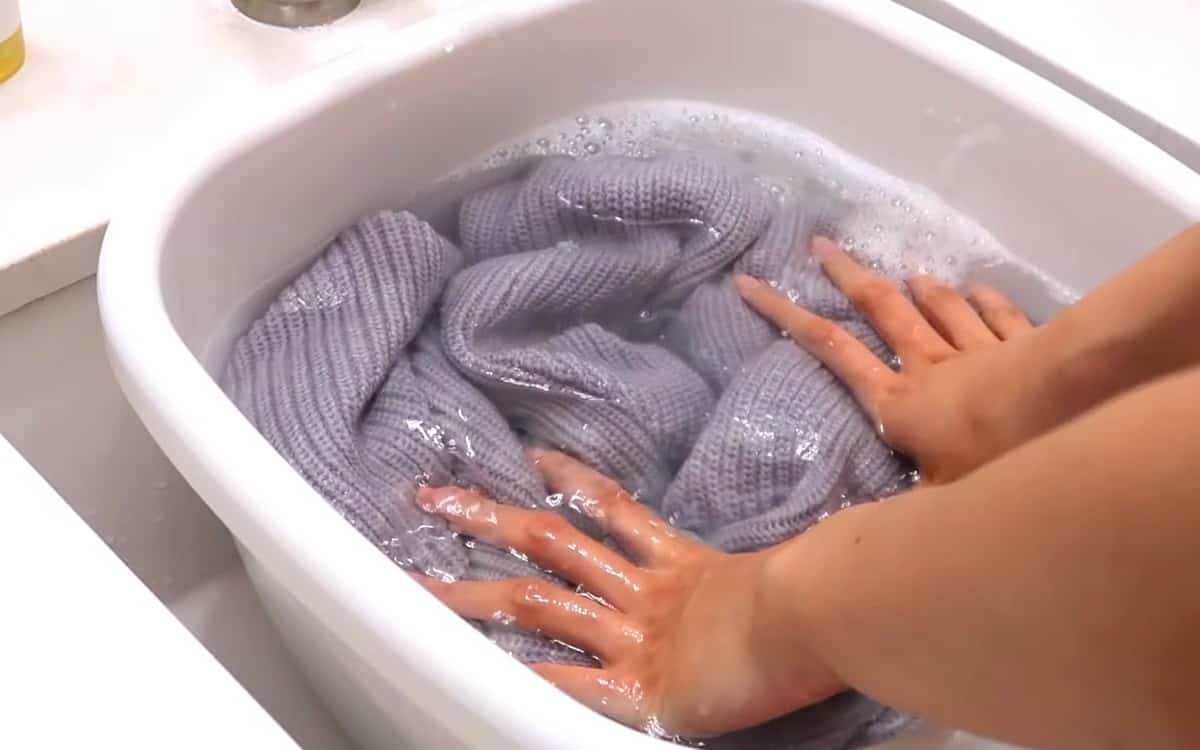
Hand washing is an old-fashioned way of cleaning delicate clothes such as wool clothes and underwear. With this method, you will only need a basin, water, and detergent.
Fill the basin with water, preferably lukewarm or warm. Before putting your laundry in it, check if there are visible stains on the clothes that may not be removed by soaking alone. Treat these stains with liquid detergent or commercial stain removers using your fingers, and do not scrub them to avoid damaging the delicate garment.
Add detergent to the water, then gently swish the mixture to allow the detergent to dissolve completely. Soak your clothes in it, and carefully press them down to the basin to ensure that they are fully submerged. Let them soak for at least 20 minutes or until the stains are no longer visible.
When all the dirt has been removed, rinse your clothes by gently squeezing them to remove excess water. Lastly, you should lay them flat on a surface under the sun or hang them until they dry completely.
You can also hand wash regular clothes or non-delicate ones. But, instead of soaking them to get rid of the stain, you may scrub them with your hands. After scrubbing, rinse them to remove excess detergent. Then, twist and squeeze the water out to make the drying time shorter.
Basin and Brush
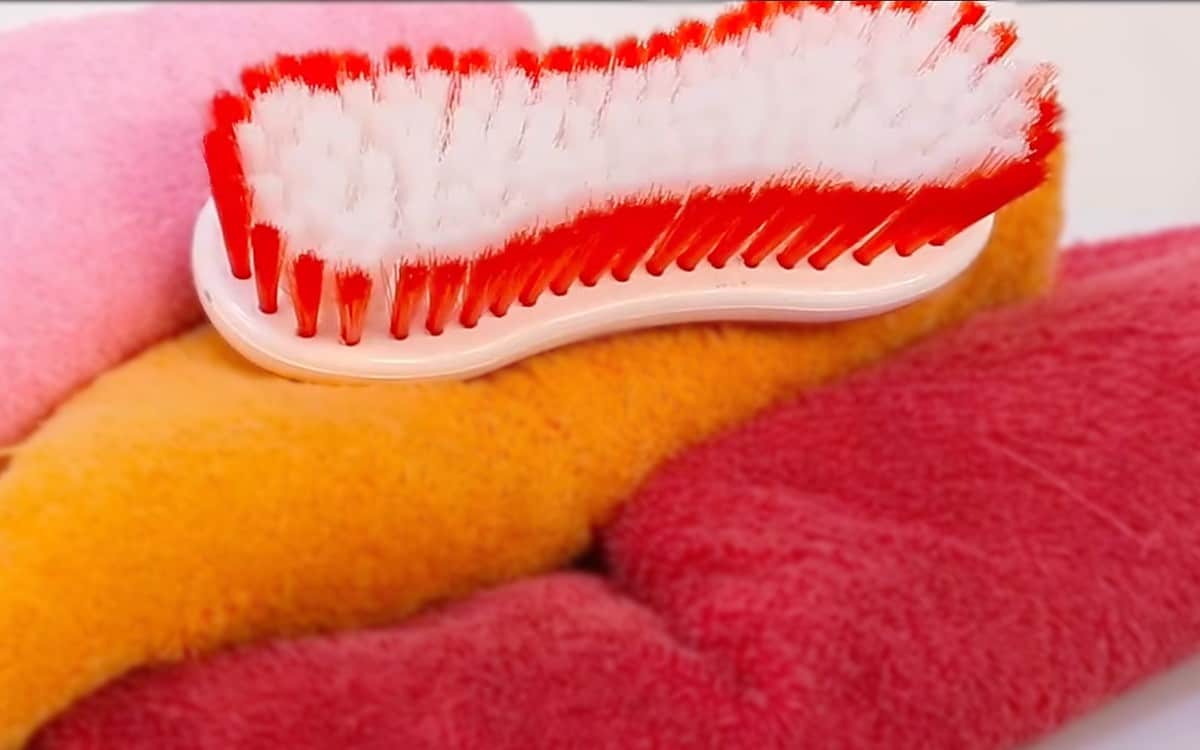
This method is useful if you want to get rid of stubborn dirt on particular parts of your clothes. Aside from detergent and water, all you need are a basin and a brush. However, not all types of brushes are suitable to use. Use a scrub brush with soft bristles to avoid damaging your clothes.
To do this, fill the plastic basin with water to about two-thirds full. Add the detergent, then agitate the water to dissolve it thoroughly. Now, immerse the clothes in the mixture and let them soak for about 10 minutes or longer, depending on how dirty they are.
After a sufficient amount of time, take your scrub brush and start scrubbing the soiled areas of the clothes while still submerged in the water. Be careful not to scrub too hard to avoid abrasions on the fabric.
When you’re done removing the dirt, rinse the clothes in a separate bucket with clean water. Squeeze them to remove excess water and to decrease the drying time.
This method is fairly easy to do, but there are some minor drawbacks to it. When washing clothes using this method, you’ll need to be in a hunched position to reach the brush and do the scrubbing, which may not be good for your back and posture. This method is also a bit messy since you will constantly be moving your hands while they’re submerged in water.
Washboard
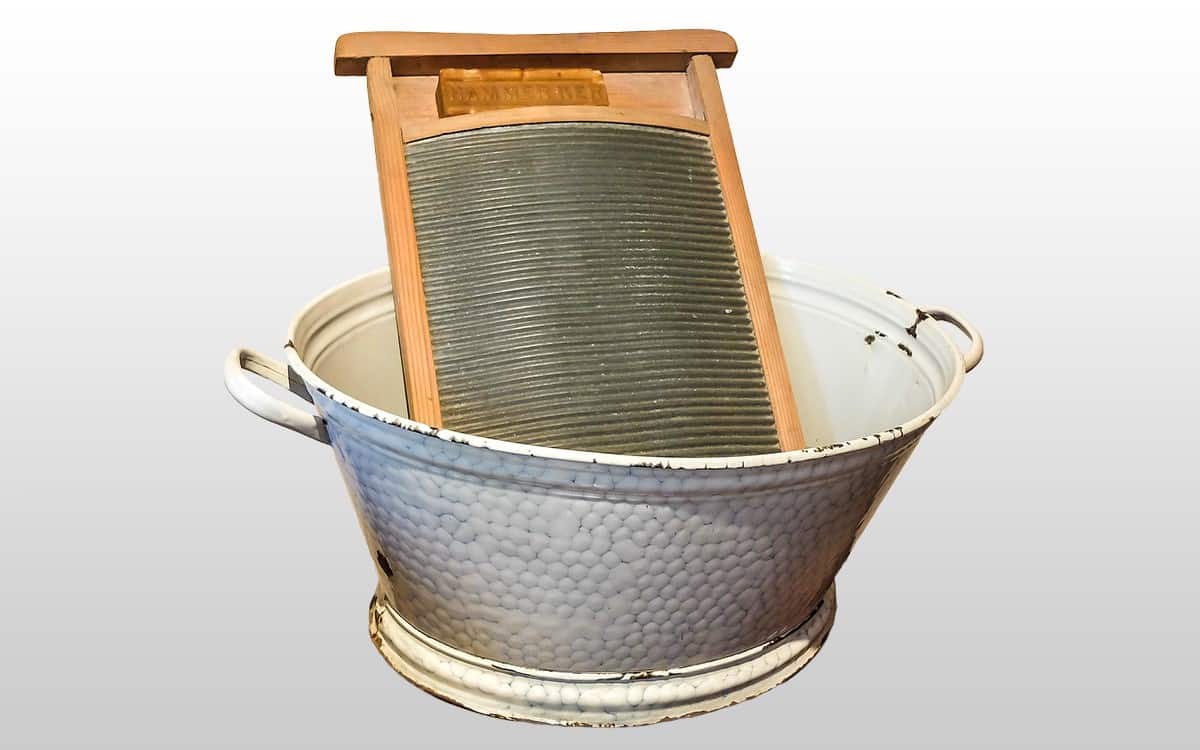
Using a washboard is a classic and effective way of washing clothes without electricity. The washboard is made of a wood case and a corrugated metal plate. It fundamentally works the same as the brush and basin method.
There are two ways to wash your clothes using a washboard, which only differs on the way you apply the soap or detergent. The first way is by filling a bucket with soapy water, then repeatedly dipping the clothes you are washing in it. The second way is by applying the soap directly to the washboard. Both ways are effective, although the former is more water-efficient and requires less detergent.
For the actual washing part, you need to “scrub” the clothes against the surface of the washboard by moving them up and down. Continue scrubbing until you have completely removed the stains. Once done, rinse the clothes in a separate bucket of clean water, squeeze out the excess water, then hang them to dry out.
If you are living off the grid, it is highly possible that there’s a river nearby. Go to the shallow part of the river and bring your washboard with you. Wash your clothes using the second way of using a washboard. This way, you can save your precious water supply and utilize it for other purposes.
Bucket and Plunger
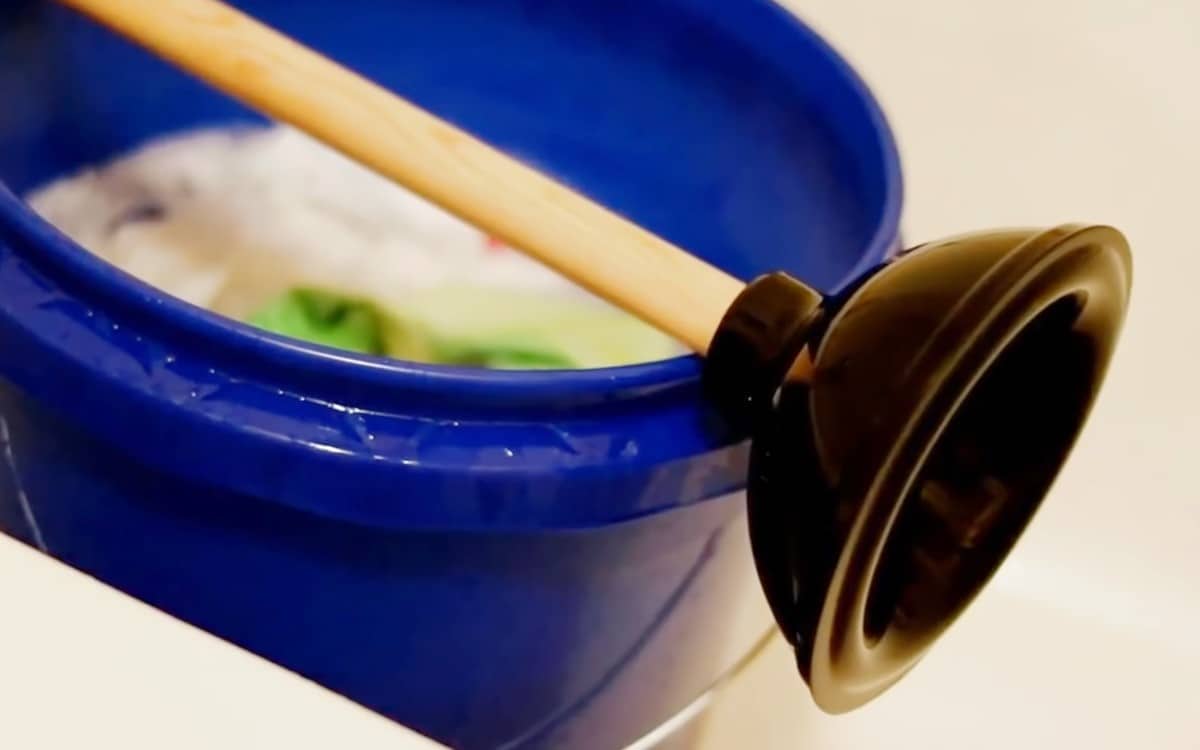
The plunger method is probably the most popular non-electric washing machine alternative. It works by mimicking the mechanism of an actual washing machine through the application of manual mechanical work. It is an easy and inexpensive method that does the work effectively.
To use this method, you will need a clean toilet plunger and a bucket, ideally one with a lid. Drill a hole in the lid, just enough for the plunger’s handle to fit through. Fill the bucket with water about three-quarters full. Add the detergent, then put your laundry inside.
Cover the bucket with the handle of the plunger sticking out. Ensure that it won’t come off easily to avoid splashing and making the floor wet and slippery. Now, agitate the contents of the bucket by pushing down and pulling up the plunger to create an action similar to that of a traditional washing machine.
Continue plunging vigorously for about 10 minutes, or until the clothes are clean enough. Take out the clothes, then rinse them in a bucket filled with clean water.
Instead of a toilet plunger, you may also buy a plunger specifically designed for this purpose. Although it is more expensive, it will result in greater agitation while requiring less application of force. It also has a shovel-like handle that provides a better grip.
This method is very effective, but it may be inefficient for a large household. It is best suitable for a single person or a couple since the amount of their laundry is relatively small. It can still be used for households with more than three members, but you will need to do the laundry in batches.
Hand Cranked Washing Machines
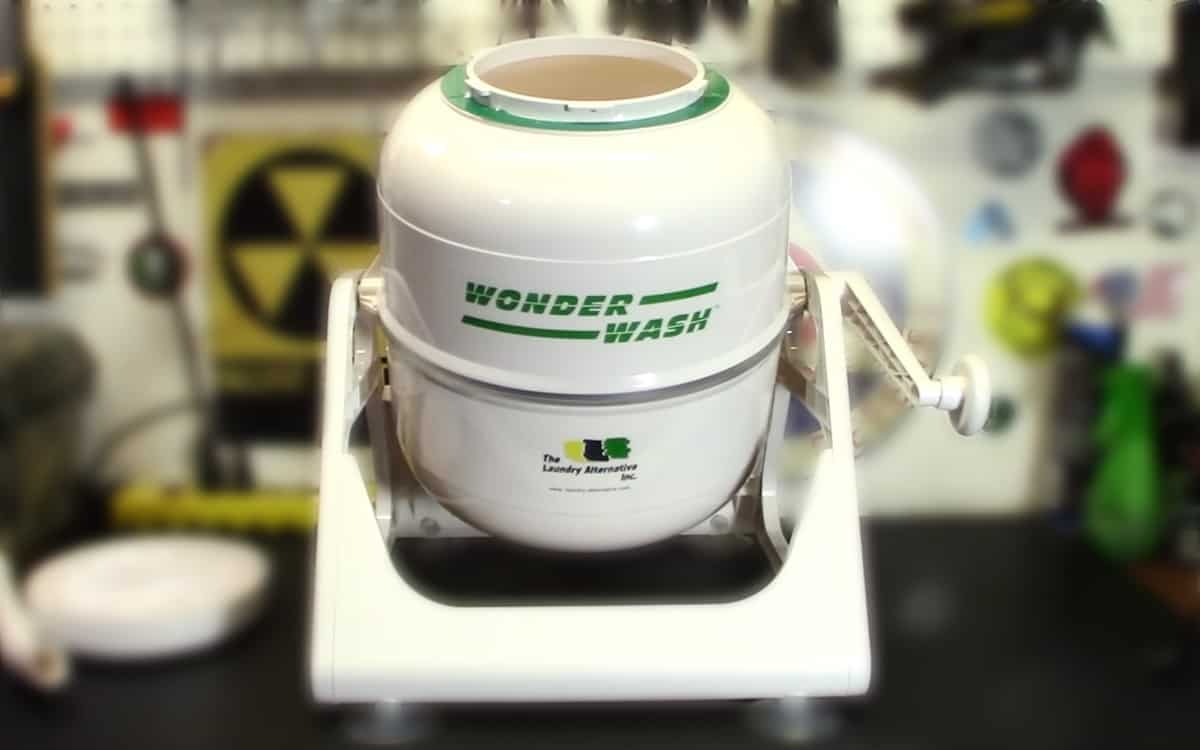
Hand-cranked washing machines work like the plunger method – a manual mechanical work is converted to an agitation mechanism responsible for “washing” your clothes. Some of the most popular brands are The Wonder Wash and Avalon Bay Eco Wash.
They have an average capacity of only around 5lbs of laundry per batch, so they are not ideal for large households. You can always divide your laundry into several batches, but it can be a time-consuming task.
Using this type of equipment is fairly simple, just fill them full of water, add the detergent, then put your clothes in. Spin the crank handle for several minutes or as instructed by the manual. Once done, rinse your clothes and squeeze out the excess water.
Drying Your Clothes
Wringer Washer
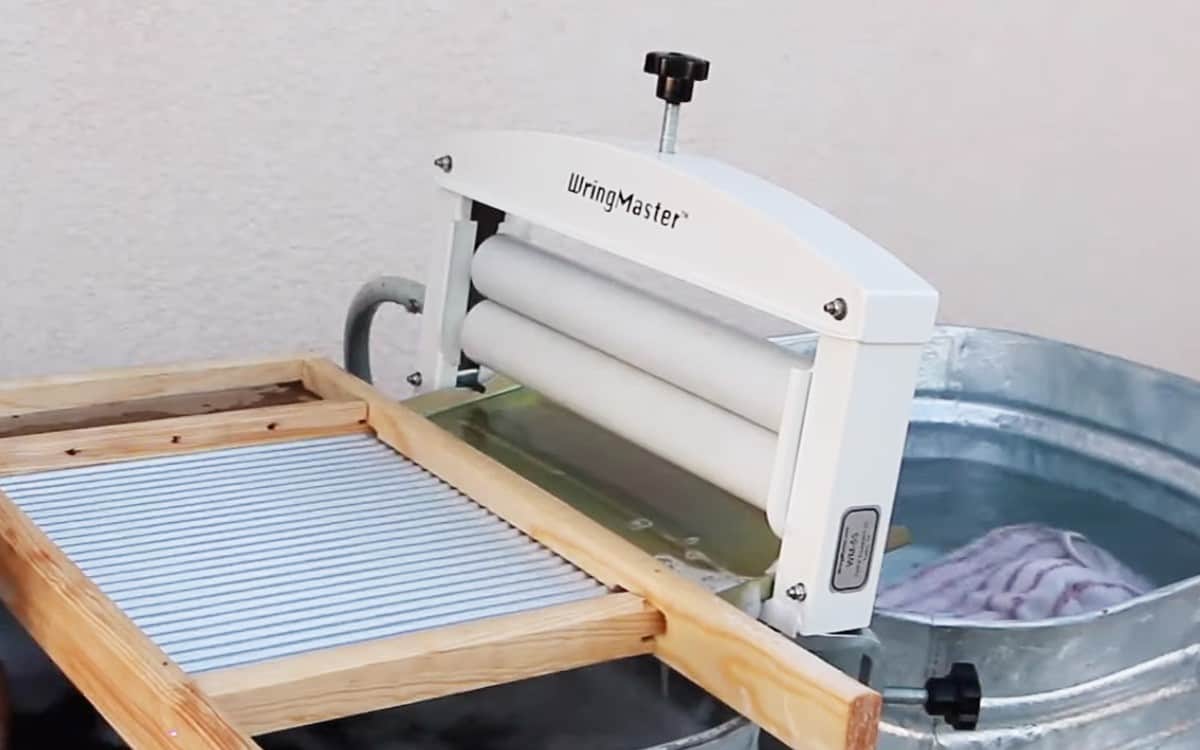
A wringer washer is not actually a washer; it is more like a dryer. Wringing your clothes after washing is not necessary, but it will decrease the drying time significantly.
Modern washing machines have built-in dryers so that when you take out your laundry, they are already relatively dry, water is no longer dripping, and thus need a shorter time to dry completely. They utilize heat for this process.
Wringing, on the other hand, does not use heat to dry clothes; instead, it removes excess water by squeezing it out. This device consists of two rollers, placed side-by-side and with an adjustable gap. The gap size can be adjusted to accommodate the size of the clothes. For instance, if you are wringing a t-shirt, make the gap smaller, but if you are wringing a sweater, then adjust the gap to make it wider.
Wringing has the tendency to stretch out clothes excessively when used repeatedly. To avoid damage, you can twist and squeeze your wet clothes first so that you’ll only have to use the wringer once.
Sun Drying
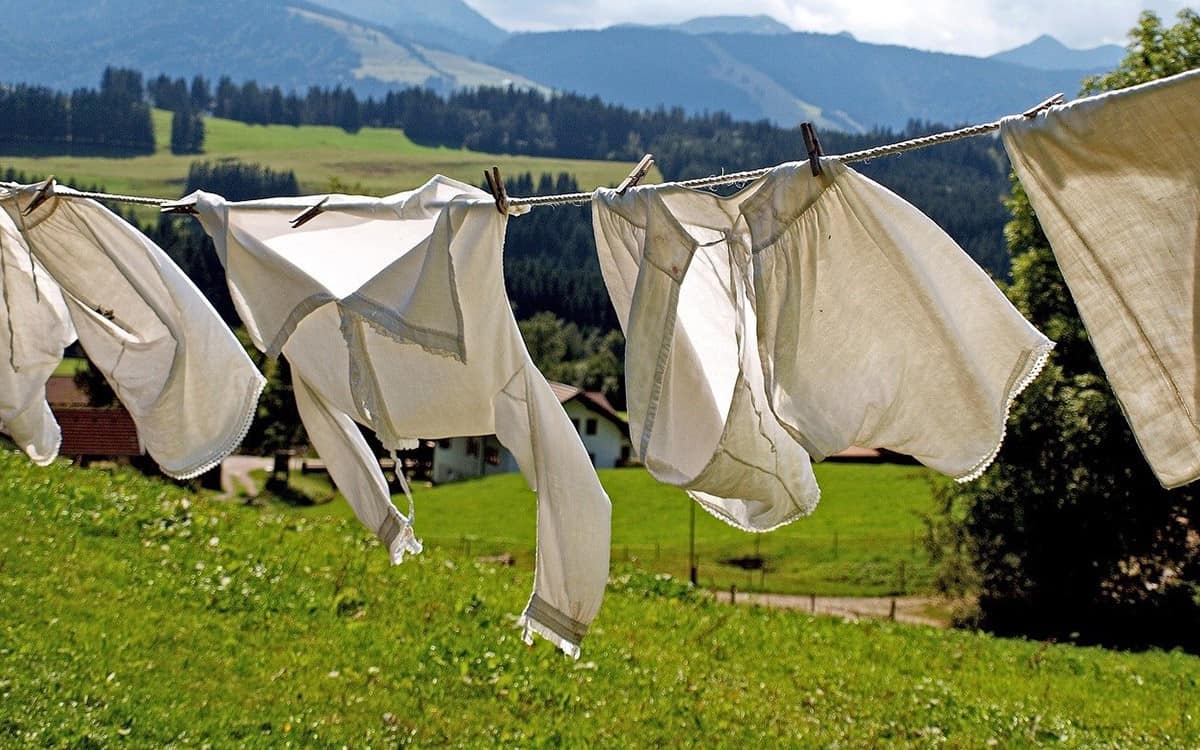
Sun-drying is the traditional and probably, the best method for drying clothes. It does not require electricity or special machines. All you need is the sun, a wire or pole where you can hang your clothes, and clothespins to ensure that the clothes don’t fall.
There are three main factors that affect the time required to sun-dry clothes: temperature, humidity, and airflow.
Temperature and drying time are inversely related; the higher the temperature, the lesser is the drying time. Full exposure to the sun will speed up the drying time since evaporation will be faster.
On the other hand, a higher humidity level will make the drying time longer. Humidity is the measure of the moisture that the air contains. Hence, if the air’s humidity level is high, the water in the clothes will evaporate slower.
Lastly, decent airflow will shorten the drying time. For instance, wet clothes hung significantly apart will dry quicker than clothes hung close to each other. The air carries heat with it, so if there’s sufficient airflow, the clothes will receive more heat and thus dry faster.
In addition to the efficiency of sun-drying, it also eliminates bacteria and viruses that may have attached to your clothes when you wore them. Most harmful organisms cannot survive at an elevated temperature, so the heat from the sun is sufficient to get rid of them.

